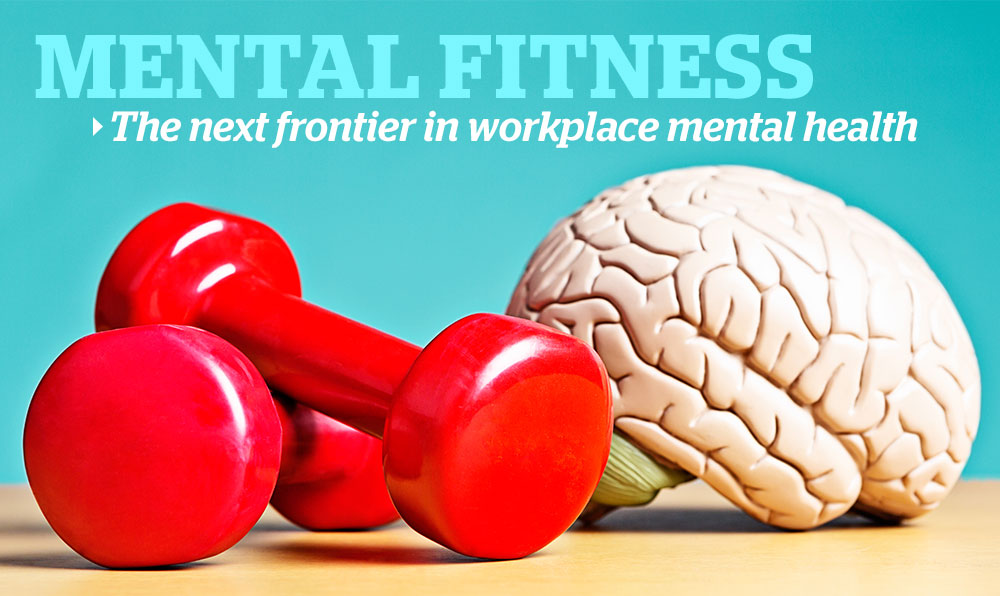

Columns/Blogs
Features
Mental Health
Mental fitness: be aware of your go-to self-soothing habit
By Bill Howatt

EDITOR’S NOTE: ‘Mental Fitness: The next frontier in workplace mental health’ is a weekly series, in partnership with Dr. Bill Howatt of Howatt HR Consulting in Ottawa. This series takes a deeper look at mental fitness — an approach to prevent mental harm and promote mental health.
How we cope with unwanted, negative stress matters.
If we cope with it effectively, we are more likely to tame its effects and less likely to allow it to overwhelm us and leak into other parts of our life. If we struggle to cope with it and hyper-focus on it, it can negatively impact other areas of our life.
This microskill focuses on self-soothing behaviours, the kinds we engage in to cope with unpleasant emotions. Self-soothing behaviours can be positive (for example: meditation) or at-risk (for example: complaining to anyone who will listen to your concerns).
We will never be able to escape all unwanted, negative stress. Most will agree that life is hard but can be wonderful. To promote mental fitness, it is helpful to pay attention to self-soothing behaviours and habits.
Positive self-soothing behaviours provide a sense of control and calm; their at-risk cousins are intent on escaping pain. Since human beings are motivated to go towards pleasure and avoid pain, whenever there is emotional pain, the average person will want to escape and move away from it as quickly as possible.
With emotional pain come unpleasant emotions and increased risk of negative self-talk and even acting-out behaviours (for example: irritability, rudeness). Sadly, we do not talk enough about how we feel or the different kinds of negative thoughts that jump into our heads.
Why? Because of stigma. We have learned from interacting in our society that sharing or talking about feelings and thoughts is a sign of weakness. This could not be further from the truth.
“What we choose to do when under unwanted, negative stress directly influences our mental health for good or bad over the long term.” — Dr. Bill Howatt
Being aware of your and others’ feelings provides perspective, as does being aware of how your thinking influences your self-soothing behaviours and habits. Self-soothing is what we choose to do when experiencing unwanted, negative stress. What we choose to do is influenced by what we think will help us most to cope.
Logically, it makes more sense for a person to engage in positive self-soothing and avoid negative self-soothing.
If only human behaviour were that easy, we would do what we know is good for us first. The challenge with many human behaviours is we mostly live as an economist would describe as the utility of now.
Psychologically Safe Workplace Awards provide employers tools, data on mental health
This means that many put more value on immediate relief from unpleasant emotions and thoughts than a perceived long-term risk if the behaviour is repeated.
For example, if after a stressful day, your go-to coping strategy is lying on the couch, a better alternative may be to increase your exercise to improve your overall fitness level and energy and to lose a few pounds.
However, when you experience unwanted, negative stress — which is most days — the thought of going for a walk after work is not as appealing as lying on the couch and doing nothing.
Lying on the couch is not the problem. However, if it is preventing you from moving and getting your daily steps, your physical health will erode. The math is simple: we must burn more calories than we take in to maintain or lose our body weight.
A plan for creating positive self-soothing behaviours
Complete a self-soothing inventory: For one week, write down all the things you do in response to stress. The purpose is to become mindful of what you are doing daily to feel good or to cope with unwanted stress.
| Daily Log | My daily self-soothing behaviours
How you cope to feel good |
Self-soothing behaviour profile
Label each behaviour as: Positive = 1 Negative = 0 |
| Day 1 | ||
| Day 2 | ||
| Day 3 | ||
| Day 4 | ||
| Day 5 | ||
| Day 6 | ||
| Day 7 |
Insights from self-soothing inventory: From your self-soothing behaviour inventory, note your key observations regarding what you do to feel good or to self-soothe from unwanted stress. Notice what comes easier or what you are doing more of each day.
Meditation can be powerful to calm the mind under stress; eating when you are not hungry can create the illusion of symptom relief. Both can be perceived as being helpful but are not equal for long-term health. Write out what you learned about your strengths and areas to improve.
Create your positive self-soothing list: One way to create positive emotional well-being is through mindful preparation. Create a list of 10 positive distractions to focus on when you are experiencing unwanted, negative stress.
Your list may include meditation, exercise, body scans, deep breathing, progressive relaxation, journaling, positive affirmations, hobbies, volunteering, reading, family activities, and calling a trusted friend to chat.
The goal is to focus on behaviours that calm the mind and body.
 Dr. Bill Howatt is the Ottawa-based president of Howatt HR Consulting.
Dr. Bill Howatt is the Ottawa-based president of Howatt HR Consulting.
If there is a particular microskill or topic you would like to see Dr. Howatt write on that supports employees’ mental health in the workplace, please send your request to Talent Canada editor Marcel Vander Wier.
Print this page